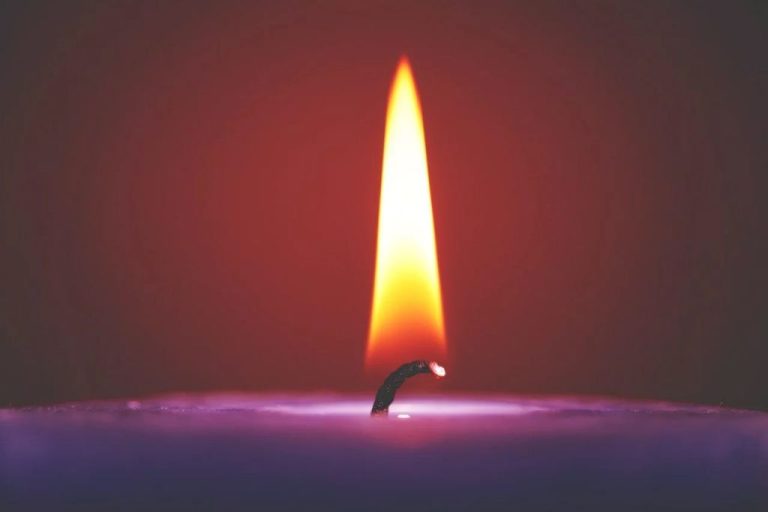What Type Of Energy Is Blowing Out A Candle?
Blowing out candles is something we’ve all done before, whether it’s on a birthday cake or just to extinguish a candle’s flame. But have you ever wondered about the science behind this simple act? When you blow out a candle, you’re witnessing some interesting physics and chemistry phenomena. In this article, we’ll take a closer look at what’s happening when you blow out a candle. We’ll discuss the transfer of energy that takes place, the process of combustion, the candle wick, flame shapes, and the most effective blowing techniques.
What Happens When You Blow Out a Candle
When you blow air towards a lit candle, you are directing a stream of air molecules towards the flame. This stream of air hits the flame and causes it to flick and flutter. As more air molecules hit the flame, the airflow disrupts and cuts off the supply of oxygen to the flame. This process extinguishes the combustion reaction sustaining the flame, and the candle goes out.
Specifically, the flame on a candle is sustained by a combustion reaction between wax vapor from the candle wick and oxygen in the surrounding air. This exothermic reaction gives off heat and light energy, creating the visible flame. Blowing air towards the flame introduces a high-speed stream of air molecules that collide with the flame and wax vapor. This disrupts the vapor trail rising from the wick and mixes the air supply around the flame. This dilution of oxygen and wax vapor makes it harder for the combustion reaction to occur. With the reaction disrupted, the flame can no longer sustain itself and goes out.
The precise reason a flame is extinguished depends on the strength and angle of the air blown at it. A strong, direct blow can completely detach the flame from the wick by blowing the vapor trail sideways. A less direct blow may only dilute the oxygen supply enough to disrupt combustion. But in all cases, blowing air introduces enough turbulence and mixing to interrupt the chemical reaction powering the flame. This cuts off the heat and light energy being generated, leading to the visual effect of the flame disappearing.
Transfer of Energy
When you blow out a candle, you are transferring energy from your breath to the flame. Specifically, it is the kinetic energy of the moving air that gets transferred to the candle flame. Kinetic energy is the energy of motion, and in this case the motion is the fast-moving air molecules that make up your breath.
As you blow towards the flame, the air molecules collide with the flame and push against it. The kinetic energy of the moving air is converted into turbulence in the flame as the air molecules mix with the hot gases produced by the combustion reaction. This disrupts the flame and eventually extinguishes it. Essentially, your breath adds enough energy disturbance to overcome the flame’s steady burn, causing it to go out.
The amount of kinetic energy needed depends on the size and intensity of the flame. A larger, more powerful flame will require more air speed and force to extinguish it. When blowing, you instinctively blow harder to put out a bigger flame. The breath force required is also related to how sheltered and steady the flame is. This transfer of motion energy from your lungs through the air to the flame is the key physics principle that allows you to blow out a candle.
Convection
Convection currents play a key role in keeping a candle flame burning. The flame heats the surrounding air, causing it to expand and become less dense. This less dense, warmer air rises upward from the flame. At the same time, cooler and denser air sinks down to take its place, creating a continuous convection current. This brings fresh oxygen to the flame while carrying away combustion byproducts like carbon dioxide.
When you blow out a candle, you disrupt these convection currents with a strong, directed blast of air. This blowing air overwhelms and displaces the natural convection pattern around the flame. It pushes the rising warm air and oxygen supply away from the flame, while also blowing the flame itself to the side. Without a steady supply of fresh oxygen reaching the wick, the flame is quickly snuffed out.
The strength and direction of your blowing air needs to fully disrupt the convection pattern, or the flame may waver without going out. Directing your breath to the base of the flame is most effective, as this is where the convection current begins. Blowing out a candle demonstrates how sensitive fire is to the availability of surrounding oxygen and steady air currents.
Oxygen Depletion
When you blow air towards a candle flame, you are directing a stream of air that removes oxygen from around the flame. Fire needs oxygen to burn, so blowing removes some of that oxygen supply. Without enough oxygen reaching it, the flame cannot sustain itself and goes out.
More specifically, blowing air pushes the oxygen molecules away from the flame and replaces them with nitrogen and carbon dioxide from your breath. This lowers the oxygen concentration around the flame. The flame starts to dim and shrink as less oxygen reaches it. If you blow hard enough to significantly cut off the supply of oxygen to the flame, it will be extinguished.
Additionally, the blowing motion causes turbulence that disrupts the convection currents that are bringing new oxygen to the flame. This turbulence interferes with the flame’s supply of oxygen. The flame flickers and dies out without enough oxygen reaching it.
So in summary, blowing out a candle works by directing an air current towards the flame. This air current removes oxygen from the flame’s vicinity and introduces other gases that do not support combustion. The flame is starved of oxygen and can no longer continue burning.
Combustion Process
For a candle flame to burn, a chemical reaction called combustion must occur. Combustion is a process where a substance reacts with oxygen and releases energy in the form of light and heat.
The primary fuel source in a candle is wax, which is composed mainly of hydrocarbons. When the wax melts and vaporizes, the hydrocarbon molecules mix with oxygen in the air surrounding the flame. The hydrocarbons and oxygen then undergo an exothermic chemical reaction, meaning it releases energy.
The combustion reaction requires an ignition source to get started, which is the candle’s wick. The wick carries the melted wax up to the flame zone by capillary action. Once lit by a match or lighter, the ignition temperature of the wick sustains the release of the wax vapor into the oxygen, allowing the chemical reaction to continue.
For the combustion reaction to occur, oxygen must be readily available. The luminous zone of the flame is where combustion is taking place continuously. If there is not enough oxygen reaching that zone, such as when you blow air onto a candle, the flame will go out.
Candle Wick
The candle wick is a crucial component that impacts the shape and brightness of the candle flame. Wicks are generally made from braided cotton threads that have been twisted together. When the wick is lit, the heat of the flame causes the wax near the wick to melt. This liquid wax then travels up the wick through capillary action. The wax gets drawn up the wick, where it vaporizes at the tip and combusts with oxygen in the air to produce the flame.
The thickness and shape of the wick impacts how quickly the melted wax can travel up. Thicker wicks allow more wax to be drawn up, resulting in a larger flame. Wicks that have a flat cross-section can also allow fuel to travel quicker compared to round wicks. The material the wick is made of affects how fast heat is conducted. Cotton conducts heat slower than materials like paper, so it reduces the chance of the wick burning too quickly.
When the wick is the proper thickness for the diameter of the candle, it will hold the wax in the melted state at the tip. This allows the fuel to combust steadily with oxygen and generate a bright teardrop or pear-shaped flame. If the wick is too thick, it will produce excess unburnt wax that releases smoke. Wicks that are too thin can create a dim flame that tunnels into the wax without fully melting the tip.
Flame Shape
The flame on a candle has a distinct teardrop shape that tapers at the top. This shape is the result of how the heat from the flame interacts with the surrounding air. At the base of the flame near the wick, the fuel (wax) is vaporizing and mixing with oxygen to sustain combustion. This area is the hottest part of the flame.
As the hot gases rise, they spread out and cool. The tapering top of the teardrop shape is the coolest part of the flame, where the gases have spread out the most. The shape is also influenced by convection, as hot gases rise and pull surrounding air up into the flame. This influx of oxygen helps keep the candle burning.
When you blow on a candle, you disrupt this teardrop shape and flame behavior. The force of your breath pushes into the flame and causes turbulence, bending the tapered top part sideways. This disrupts the convection pattern and can separate the flame from its heat source, extinguishing the candle. The flame shape provides clues into the combustion process and how sensitive it is to disturbances.
Blowing Techniques
There are a few different techniques you can use when blowing out a candle. The most common methods are short puffs versus a steady blow.
With short puffs, you want to blow out sharp, quick bursts of air towards the flame. The key is to blow forcefully enough to displace the oxygen fueling the flame, but not so hard that you blow the candle itself over. Usually 2-3 short puffs in rapid succession will snuff out the flame.
A steady blow involves pursing your lips and directing a continuous stream of air at the flame. You want to blow steadily and firmly. The flame will typically go out after 1-2 seconds of blowing. The advantage of this technique is you can aim the air jet more precisely at the flame.
In terms of effectiveness, either method can work well. Short puffs displace the oxygen rapidly, while a steady blow overwhelms and extinguishes the flame over a slightly longer period. With a steady blow, you may also be able to avoid blowing out the entire candle if you angle and direct the air jet carefully.
Most people find the short puff approach easier, as you don’t have to blow continuously. But feel free to experiment with both techniques to see which style you prefer.
Conclusion
When you blow out a candle, you are interrupting the combustion process by removing oxygen and disrupting the convection current that brings fresh oxygen to the flame. The flame relies on oxygen to sustain the chemical reaction of burning the candle wax. By blowing, you are transferring kinetic wind energy to disrupt the convection and remove oxygen from the flame zone. This stops the chemical reaction and extinguishes the flame. The key energy transfer is your kinetic energy to the oxygen molecules which disrupts the convection process that supplies oxygen to the flame. Without a steady supply of oxygen, the combustion reaction cannot be sustained and the flame goes out.




